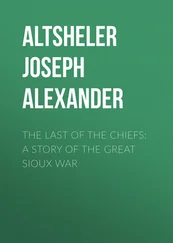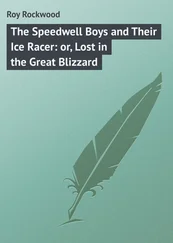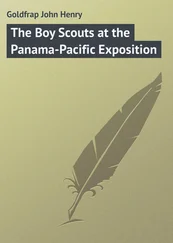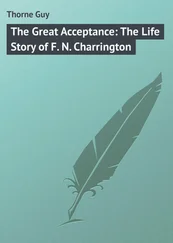Helen Cody Wetmore
Last of the Great Scouts: The Life Story of William F. Cody - “Buffalo Bill"
Madison & Adams Press, 2021
Contact: info@madisonadamspress.com
EAN 4064066384111
This is a publication of Madison & Adams Press. Our production consists of thoroughly prepared educational & informative editions: Advice & How-To Books, Encyclopedias, Law Anthologies, Declassified Documents, Legal & Criminal Files, Historical Books, Scientific & Medical Publications, Technical Handbooks and Manuals. All our publications are meticulously edited and formatted to the highest digital standard. The main goal of Madison & Adams Press is to make all informative books and records accessible to everyone in a high quality digital and print form.
GENEALOGY OF BUFFALO BILL. GENEALOGY OF BUFFALO BILL. Table of Contents The following genealogical sketch was compiled in 1897. The crest is copied from John Rooney's "Genealogical History of Irish Families." It is not generally known that genuine royal blood courses in Colonel Cody's veins. He is a lineal descendant of Milesius, king of Spain, that famous monarch whose three sons, Heber, Heremon, and Ir, founded the first dynasty in Ireland, about the beginning of the Christian era. The Cody family comes through the line of Heremon. The original name was Tireach, which signifies "The Rocks." Muiredach Tireach, one of the first of this line, and son of Fiacha Straivetine, was crowned king of Ireland, Anno Domini 320. Another of the line became king of Connaught, Anno Domini 701. The possessions of the Sept were located in the present counties of Clare, Galway, and Mayo. The names Connaught-Gallway, after centuries, gradually contracted to Connallway, Connellway, Connelly, Conly, Cory, Coddy, Coidy, and Cody, and is clearly shown by ancient indentures still traceable among existing records. On the maternal side, Colonel Cody can, without difficulty, follow his lineage to the best blood of England. Several of the Cody family emigrated to America in 1747, settling in Maryland, Pennsylvania, and Virginia. The name is frequently mentioned in Revolutionary history. Colonel Cody is a member of the Cody family of Revolutionary fame. Like the other Spanish-Irish families, the Codys have their proof of ancestry in the form of a crest, the one which Colonel Cody is entitled to use being printed herewith. The lion signifies Spanish origin. It is the same figure that forms a part of the royal coat-of-arms of Spain to this day—Castile and Leon. The arm and cross denote that the descent is through the line of Heremon, whose posterity were among the first to follow the cross, as a symbol of their adherence to the Christian faith.
PREFACE. PREFACE. Table of Contents In presenting this volume to the public the writer has a twofold purpose. For a number of years there has been an increasing demand for an authentic biography of "Buffalo Bill," and in response, many books of varying value have been submitted; yet no one of them has borne the hall-mark of veracious history. Naturally, there were incidents in Colonel Cody's life—more especially in the earlier years—that could be given only by those with whom he had grown up from childhood. For many incidents of his later life I am indebted to his own and others' accounts. I desire to acknowledge obligation to General P. H. Sheridan, Colonel Inman, Colonel Ingraham, and my brother for valuable assistance furnished by Sheridan's Memoirs, "The Santa Fe Trail," "The Great Salt Lake Trail," "Buffalo Bill's Autobiography," and "Stories from the Life of Buffalo Bill." A second reason that prompted the writing of my brother's life-story is purely personal. The sobriquet of "Buffalo Bill" has conveyed to many people an impression of his personality that is far removed from the facts. They have pictured in fancy a rough frontier character, without tenderness and true nobility. But in very truth has the poet sung: "The bravest are the tenderest— The loving are the daring." The public knows my brother as boy Indian-slayer, a champion buffalo-hunter, a brave soldier, a daring scout, an intrepid frontiersman, and a famous exhibitor. It is only fair to him that a glimpse be given of the parts he played behind the scenes—devotion to a widowed mother, that pushed the boy so early upon a stage of ceaseless action, continued care and tenderness displayed in later years, and the generous thoughtfulness of manhood's prime. Thus a part of my pleasant task has been to enable the public to see my brother through his sister's eyes—eyes that have seen truly if kindly. If I have been tempted into praise where simple narrative might to the reader seem all that was required, if I have seemed to exaggerate in any of my history's details, I may say that I am not conscious of having set down more than "a plain, unvarnished tale." Embarrassed with riches of fact, I have had no thought of fiction. H. C. W. CODYVIEW, DULUTH, MINNESOTA, February 26, 1899.
CHAPTER I. — THE OLD HOMESTEAD IN IOWA.
CHAPTER II. — WILL'S FIRST INDIAN.
CHAPTER III. — THE SHADOW OF PARTISAN STRIFE.
CHAPTER IV. — PERSECUTION CONTINUES.
CHAPTER V. — THE "BOY EXTRA."
CHAPTER VI. — FAMILY DEFENDER AND HOUSEHOLD TEASE.
CHAPTER VII. — INDIAN ENCOUNTER AND SCHOOL-DAY INCIDENTS.
CHAPTER VIII. — DEATH AND BURIAL OF TURK.
CHAPTER IX. — WILL AS PONY EXPRESS RIDER.
CHAPTER X. — ECHOES FROM SUMTER.
CHAPTER XI. — A SHORT BUT DASHING INDIAN CAMPAIGN.
CHAPTER XII. — THE MOTHER'S LAST ILLNESS.
CHAPTER XIII. — IN THE SECRET-SERVICE.
CHAPTER XV. — WILL AS A BENEDICT.
CHAPTER XVI. — HOW THE SOBRIQUET OF "BUFFALO BILL" WAS WON.
CHAPTER XVII. — SATANTA, CHIEF OF THE KIOWAS.
CHAPTER XVIII. — WILL MADE CHIEF OF SCOUTS.
CHAPTER XIX. — ARMY LIFE AT FORT M'PHERSON.
CHAPTER XX. — PA-HAS-KA, THE LONG-HAIRED CHIEF.
CHAPTER XXI. — THE HUNT OF THE GRAND DUKE ALEXIS.
CHAPTER XXII. — THEATRICAL EXPERIENCES.
CHAPTER XXIII. — THE GOVERNMENT'S INDIAN POLICY.
CHAPTER XXIV. — LITERARY WORK.
CHAPTER XXV. — FIRST VISIT TO THE VALLEY OF THE BIG HORN.
CHAPTER XXVI. — TOUR OF GREAT BRITAIN.
CHAPTER XXVII. — RETURN OF THE "WILD WEST" TO AMERICA.
CHAPTER XXVIII. — A TRIBUTE TO GENERAL MILES.
CHAPTER XXIX. — THE "WILD WEST" AT THE WORLD'S FAIR.
CHAPTER XXX. — CODY DAY AT THE OMAHA EXPOSITION.
CHAPTER XXXI. — THE LAST OF THE GREAT SCOUTS.
GENEALOGY OF BUFFALO BILL.
Table of Contents
The following genealogical sketch was compiled in 1897. The crest is copied from John Rooney's "Genealogical History of Irish Families."
It is not generally known that genuine royal blood courses in Colonel Cody's veins. He is a lineal descendant of Milesius, king of Spain, that famous monarch whose three sons, Heber, Heremon, and Ir, founded the first dynasty in Ireland, about the beginning of the Christian era. The Cody family comes through the line of Heremon. The original name was Tireach, which signifies "The Rocks." Muiredach Tireach, one of the first of this line, and son of Fiacha Straivetine, was crowned king of Ireland, Anno Domini 320. Another of the line became king of Connaught, Anno Domini 701. The possessions of the Sept were located in the present counties of Clare, Galway, and Mayo. The names Connaught-Gallway, after centuries, gradually contracted to Connallway, Connellway, Connelly, Conly, Cory, Coddy, Coidy, and Cody, and is clearly shown by ancient indentures still traceable among existing records. On the maternal side, Colonel Cody can, without difficulty, follow his lineage to the best blood of England. Several of the Cody family emigrated to America in 1747, settling in Maryland, Pennsylvania, and Virginia. The name is frequently mentioned in Revolutionary history. Colonel Cody is a member of the Cody family of Revolutionary fame. Like the other Spanish-Irish families, the Codys have their proof of ancestry in the form of a crest, the one which Colonel Cody is entitled to use being printed herewith. The lion signifies Spanish origin. It is the same figure that forms a part of the royal coat-of-arms of Spain to this day—Castile and Leon. The arm and cross denote that the descent is through the line of Heremon, whose posterity were among the first to follow the cross, as a symbol of their adherence to the Christian faith.
Читать дальше












